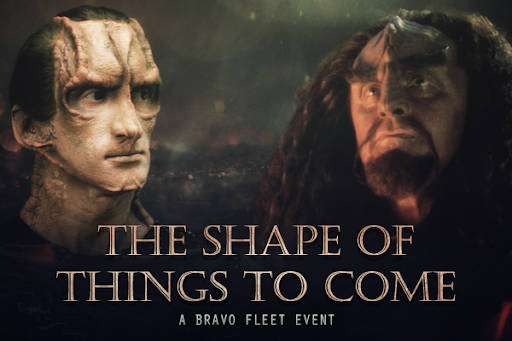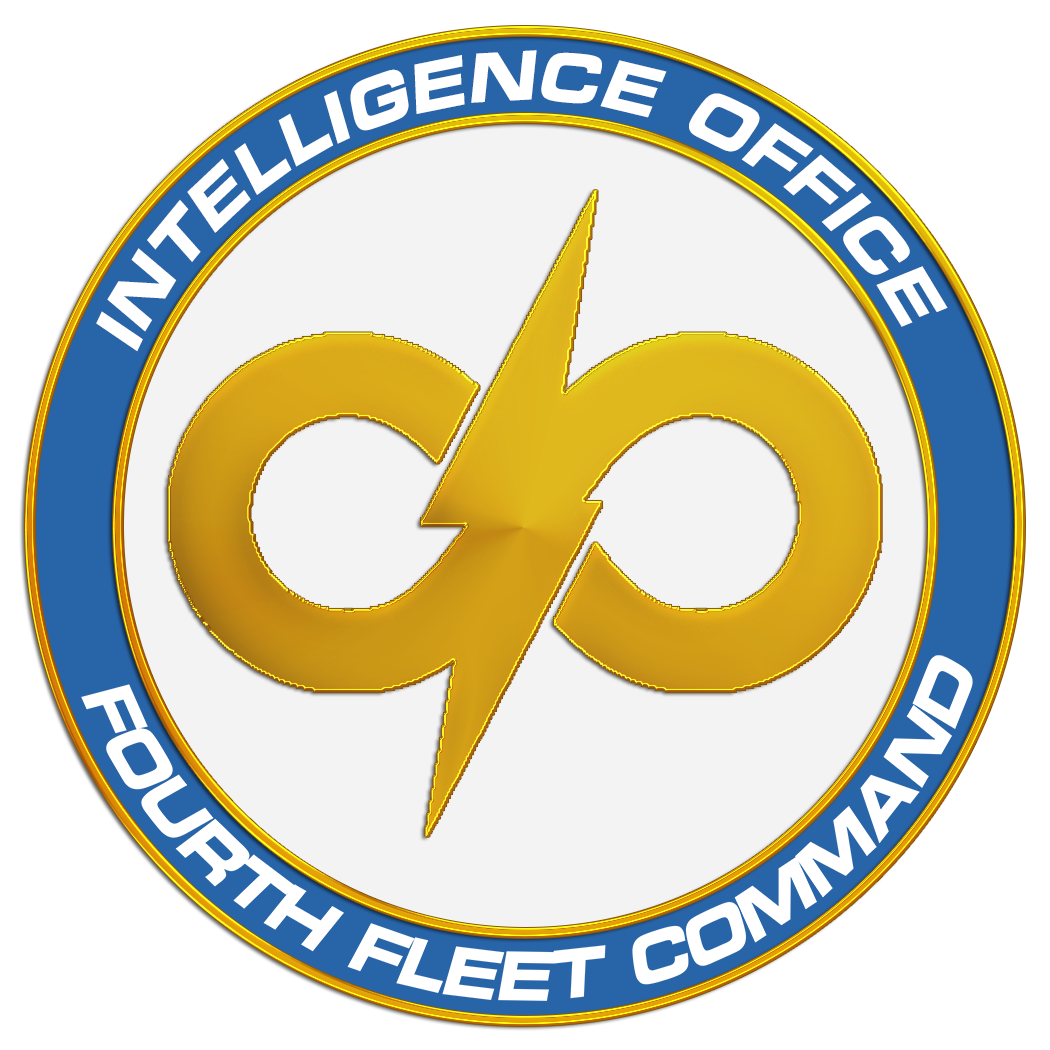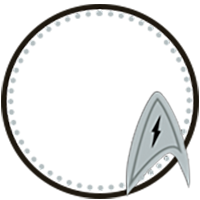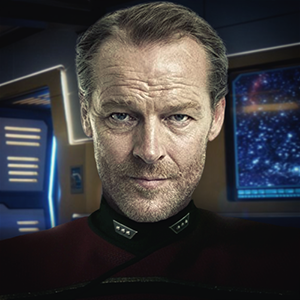‘Martok is gone,’ L’kor continued. ‘All we are doing now is picking over his bones to see if they will give us wisdom. You are refusing to acknowledge this unwelcome truth, Koloth. You call it caution; I call it a failure of courage.’
Koloth tensed. ‘What we do here, L’kor, will determine the Empire’s next steps. I will not be foolhardy.’
‘Chancellor Martok set forth for Borath on his ship. Chancellor Martok’s ship never arrived. Nobody can find any sign of Martok, his ship, or his crew. We have investigated. Starfleet has investigated. There is nothing more to find. We must accept this uncertainty.’ L’kor opened her hands in a gesture that invited the whole of the Great Hall, the whole of the High Council, into her thoughts, words, argument. Her eyes held a wry but, Hale thought, sincerely tired amusement. ‘Or are there too many in here who will doubt my words to hear that? Shall I tell you our blood runs red, and you will question that, too?’

A week ago, I announced upcoming developments to Bravo Fleet canon – not merely developments in the lore but changes to our entire approach. With Picard over and no new 25th-century Trek canon on the horizon, we enter a new era of fleet canon, where we can make bigger and bolder storytelling choices without accommodating for the possibility a new season of television will contradict everything.
Today, I am pleased to announce the first major updates of this new era – and a major update to the ‘world-state’ of the Bravo Fleet setting. Rather than changing things for the sake of it, the Intelligence Office took time to consider what part of the setting most benefitted from an update. The Federation itself is already in a rich condition for storytelling after three seasons of PIC, still only freshly returned to the wider political sphere after fifteen years of more isolated policies and dealing with the aftermath of Frontier Day. Likewise, the Romulan people receiving significant development already, both from Trek canon and in major fleet events, and have needed minimal updates. As such, our main attention turned to the other two great powers of the Alpha and Beta Quadrants, two of Star Trek’s favourite aliens: the Klingons and the Cardassians. Major new developments in mid-2401 have now changed the political landscape for those two governments, particularly in their relationships with the Federation.
The Klingon Empire has been difficult to develop fleet canon for simply because Klingons are so popular in Star Trek that we expected PIC to give us something about what happened to them after the Dominion War. As such, they were written these past four years to be relatively stable, with Chancellor Martok maintaining close relations with the Federation and any disruption or significant dramatic action coming from renegade groups – the House of Mo’Kai and the D’Ghor Hunters – who could easily be explained away if Trek canon gave us new developments. While there have been some major storylines about these factions, we have largely left the wider Klingon Empire waiting in the wings. That is about to end.
The Cardassian Union, meanwhile, has always been a bit of a problem child for the Intelligence Office. I have made no secret that I’ve never been satisfied with our canon for them. The problem with storytelling involving the Cardassian Union in the 25th century, I have always maintained, is that we need to not ignore the consequences and pay-off of the Dominion War, while still keeping what is familiar, relevant, and engaging about them. To keep them as the exact same old space-fascists diminishes their entire narrative arc in DS9. To turn them into a fully liberalised society risks making them something completely different to what people enjoy about stories involving Cardassians. Where the Klingons have only seen a little streamlining of their fleet canon, the Cardassian lore has undergone more significant retcons. While none of the changes to the Cardassian Union’s timeline between 2376 and 2401 are particularly large, more attention has been paid to their post-war politics, and the dynamics between the liberalising, reformist civilian Detapa Council and the traditionalist, authoritarian Central Command have been adjusted.
What matters the most for both powers, however, are the emerging situations of 2401.
These flashpoints are depicted in two Stories: The Death of Kings, set in the heart of the Klingon Empire, and a second, focusing on the Cardassian border (to be released later this week). These depict the key moments where conditions for the two powers and their relationships with the Federation change, forever shifting the state of play of the 25th century. While these two Stories are written to stand alone like any Intelligence Office release, they are also part of ongoing Missions from the USS Endeavour and the USS Arcturus, respectively. To get a first-hand glimpse into what’s happened with the Klingons and Cardassians, you only need’ to read the two Stories linked here – but for more context, politics, and a sense of the personal impact of these events, members are welcome to read the rest of the Missions. This is a break from our convention, but it was felt that these are intricate and exciting events that would make a full episode of TNG or DS9, and deserved that deeper examination. Reading anything beyond the Stories or even just the wiki is not expected or necessary to know what’s going on – but it may give more personal context, and help convey the themes and feel of these new changes.
So what are the new changes? You can find them explored in-depth in the Klingon Empire and Cardassian Union articles, with particular new developments also discussed in the Great Houses and the Former Demilitarized Zone. There’s also the new Interstellar Relations article, which gives a quick overview of the Federation’s current relationship with the powers of the Alpha and Beta Quadrant.
But let’s give a quick overview:
In the Klingon Empire, Chancellor Martok has gone missing, his ship and all aboard vanishing en route to Borath. Into the chaotic aftermath stepped Toral, son of Duras, a capable warrior only recently ascended to the High Council. He claimed Martok has been murdered, and that the one responsible is Lady L’kor of the House of Mo’Kai. Toral challenged and slew L’kor, proving her guilt, and leveraged this and his recent military victories to claim the title of Chancellor of the Klingon Empire. Though there are those who oppose him, he has secured significant support with a bold new pledge: to expand the Empire anew by invading the shattered territories of the fallen Romulan Star Empire. The Federation has reminded Qo’noS that they are treaty-bound to protect their allies, the Romulan Republic, but Toral has been unmoved. The new Chancellor must secure his authority over the fractious Great Houses before he can think to assemble the Empire’s fleets and go to war, but already there are border houses preparing and launching raids into Romulan territory, including that of the Republic. As it stands, the Klingon Empire seems poised on the brink of civil war, or on a collision course with not only the Romulans, but the Federation – or both.
Meanwhile, on the border with the Cardassian Union, the Federation-held territories of the Former Demilitarized Zone have been thrown into chaos with the destruction of Starfleet’s Outpost C-91. Rather than the True Way, it is the Cardassian military who are suspected of playing a part, with the outpost destroyed by ships boasting the new, advanced Cardassian ships upgraded and equipped with technology derived from the Dominion – just like the new fleets of the Cardassian Union. As Starfleet investigated, more attacks were launched, now on Cardassian-inhabited DMZ worlds. Soon after, a new group claimed responsibility for this second wave of violence, calling themselves the Maquis. The DMZ has become a hotbed of two insurgency groups fighting each other and both governments, while the Union itself intervenes in the region more directly and often than the Federation would like. Starfleet, meanwhile, struggles to maintain control in a volatile borderland where they are often unwelcome to locals, beset by insurgents, with neighbours they cannot always rely on – or trust.
Against all of this, the Federation continues to reel from the losses of Frontier Day. Starfleet’s ranks are depleted, their fleets decimated. While they are strong enough to stand against any challenge, they now find themselves stretched from border to border, crisis to crisis, and still they must re-establish themselves on the galactic stage after over a decade of inaction. For if they do not try to keep the peace, who will?
All of these developments lead us up to The Shape of Things to Come Operation, which launches next weekend. Stretching across the rest of the month, competitions will help highlight and explore these new developments, both in the form of creative competitions to directly engage with the lore, and more simple, fun ways to enjoy them!
While these will include writing competitions, it is important to note that this is not a campaign. This is not a limited-period crisis like most fleet-wide stories; these are major events that have changed the face of galactic politics. While the situations will develop over the coming months and years – Chancellor Toral may not spend forever consolidating his power, for example – you should think of these as updates to the ‘default’ in how you depict Cardassians, Klingons, and even the Romulan Republic, facing possible invasion as it now is.
As such, we encourage stories to explore these new developments, but there is no big briefing to come. You have everything you need to know from the wiki updates. This is a great time, however, for your characters to find themselves at the front lines of these emerging situations. The Intelligence Office particularly welcomes and encourages brief Missions of 6 or fewer Stories that can encapsulate and explore these developments as an ideal way to engage with this Operation creatively without taking on too much.
Possible story threads can of course be found in the updated wiki articles, but some developments with storytelling opportunities include:
- Klingon houses launching raids into Romulan territories. The Federation are only treaty-bound to protect the Republic, but what will Starfleet captains do if helpless independent worlds are targeted?
- The new Maquis strike against Cardassian and Starfleet targets before vanishing into the settlements of the DMZ. How can Starfleet find these insurgents when they hide among those for whom they fight and when Starfleet still has little local support?
- For years, Klingons have worked alongside the Federation. What happens when, under orders from the heads of their houses or even Chancellor Toral, many withdraw their cooperation from missions of security, regional administration, or even science and exploration, where they may have been integral for years? Will the loyalty of individual captains to their Federation friends win out? Or will they withdraw, perhaps risking whole operations?
- Cardassian military ships have been entering the Former DMZ in response to requests for aid from Cardassian residents. Some may cooperate with Starfleet to uphold their citizens’ safety – other Guls may be more assertive. How can Starfleet ensure Federation law, and not Union law, is enforced while keeping the peace?
- Fracture lines between Klingon Houses have been blown open by the contentious leadership of Toral. What happens when fights between them threaten to spill over into Federation space or interest? Especially if one side is part of Koloth’s pro-Federation faction?
- Both the Maquis and True Way are insurgent groups launching violent attacks. Where are they getting their weapons from, and how can Starfleet stop them from arming? Especially when the Cardassian Union, or factions within it, are thought responsible for equipping the True Way for the attack on Outpost C-91?
Remember, these situations aren’t going away any time soon! We encourage and welcome people to get stuck in with the new developments in fleet canon – but this is not a crisis threatening the galaxy, soon to be resolved by the bold and inventive Bravo Fleet. These troubles are here to stay.
The competitions of The Shape of Things to Come launch Saturday March 9th.

 Bravo Fleet
Bravo Fleet









